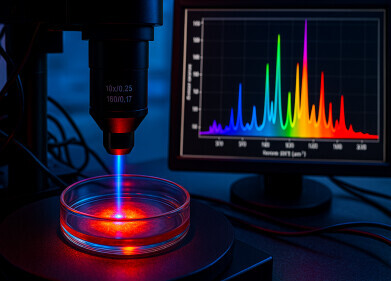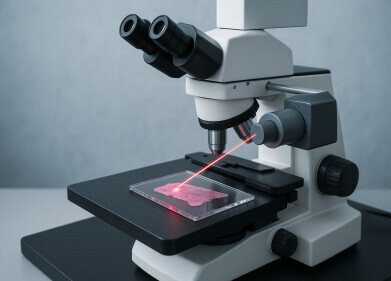Laboratory microscope
How to Turn Your Smartphone into a Microscope
Mar 02 2015
Recently, a PhD student from Brunel University London created his own cut-price microscope by adapting three cheap instruments he bought online is using his cut-price version for a study. However, things have just gone one step further!
Scientists have designed a cheap microscope that fits onto your smartphone or tablet. The microscopes are made using a 3D printer, but best of all, the blueprints for the design are available online for free from Pacific Northwest National Laboratory. This means that anyone with the right equipment and materials (which would cost under £1) can make one themselves.
How the cheap microscope works
Researchers at U.S. Department of Energy’s Pacific Northwest National Laboratory (PNNL) have developed a low-cost glass bead. This bead fits over a camera lens on a smartphone or tablet via a clip-on device. A 3D printer was used to create the clip-on device, which effectively turns the camera into a microscope. Once the bead is positioned, simply select a glass slide with the item you want to view, place it in the camera’s field, and it appears onscreen.
There are three different types of bead lens designs, each with an increasing magnification:
- 100X magnification (to view salt crystals or leaf structures)
- 350X version (to identify parasites in blood or protozoa in drinking water)
- 1000X option (to identify anthrax spores)
Why the need for cheap microscopes
There are several reasons why there has developed a need for low-cost microscopes. With the ever-increasing threat of a bio-terror attack comes an increased demand for rapid bio-detection technologies. The Department of Homeland Security has a vested interest in producing cheap microscopes that can be discarded, if they get contaminated.
Another reason for cheap microscopes is to provide schools with affordable instruments, in order to captivate their imagination in science subjects.
Janine Hutchison a microbiologist at PNNL said: “We feel there are many uses out there including human and veterinary medicine in developing countries. We are also really excited about engaging kids in science. School districts have a hard time providing enough microscopes for students.”
How to make a cheap microscope
If you do not have access to a 3D printer or indeed a smartphone, there is another option, albeit a little less high-tech. Foldscope is a folded paper microscope created by a research team at PrakashLab at Stanford University. Using a method of folding similar to Origami, these microscopes are printed and then folded from a single piece of paper. The optical microscope provides over 2000X magnification, and to make it, you just remove certain parts and start the folding process. The team behind the design say that all you need to complete the microscope is:
- a sheet of polypropylene paper complete with the microscope design
- 1 x 140X low-mag lens or 2 x 180X high-mag lens
- a 3-volt button battery
- a white LED
- an electrical slider
- copper tape
The creators of Foldscope say that their dream is that “every kid in the world should carry around a microscope.”
Are you looking for a new microscope?
If you’re looking for something more robust than these options, take a look at Labmate’s Microscope Buyer’s Guide.
Digital Edition
Lab Asia Dec 2025
December 2025
Chromatography Articles- Cutting-edge sample preparation tools help laboratories to stay ahead of the curveMass Spectrometry & Spectroscopy Articles- Unlocking the complexity of metabolomics: Pushi...
View all digital editions
Events
Jan 21 2026 Tokyo, Japan
Jan 28 2026 Tokyo, Japan
Jan 29 2026 New Delhi, India
Feb 07 2026 Boston, MA, USA
Asia Pharma Expo/Asia Lab Expo
Feb 12 2026 Dhaka, Bangladesh



















